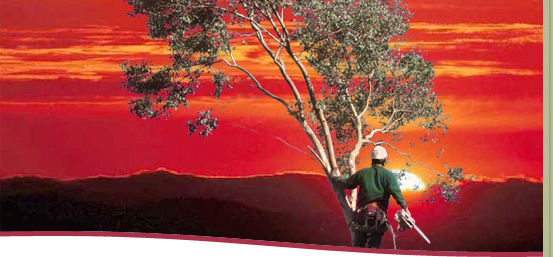
 |
Knock on Wood Advice
The old superstition holds that in order to ward off bad luck it’s necessary to knock on wood. Whether you think that’s true or not, it’s always helpful to augment your good luck with a little useful knowledge. As professional tree care experts with years of experience we’ve gotten to know a lot about trees. We’re pleased to pass along some of our knowledge to you in the hopes that it will help you care for your own trees.
Even though there are lots of things you can do to forestall disease and damage, remember that there’s no substitute for a professional when serious concerns arise.
Be sure to check our site often for updates to this page.
Don’t Forget to Water
Water or the lack of it is the number one cause of stress in trees. And the powers that be say that stressed out trees have a tendency to attract pests and disease which could result in the death of the tree, or at least make the tree look in pretty rough shape. Either way, with the extremely dry weather we have had over the last several years (6to8) we need to help our large woody plants out. Yes that’s what I called them, woody plants, and just because of their size; it doesn’t mean we can let them fend for themselves during the touch times. Our trees need water! Also because of their size; an irrigation system is not enough. A tree of, oh, lets say 14” in diameter around waist height can drink as much as 50 gallons a day if it is hot out. Now these guys do not need it everyday. Yet they do need it. How do I water a tree you might as, let’s do it this way.
- Start by getting a hose out along with a 1 gallon empty bucket
- Turn on the water, not too fast, and time how long it takes to fill the bucket.
- Multiply that amount of time by 50 and there you have it, a little less for smaller trees and a little more for larger ones.
- Put the hose on the up hill side of the tree, not too close to the trunk of the tree, more towards the area out by the end of the branches. (a.k.a. “the drip line”)
- Now grab your favorite beverage (the choice is up to you) and wait.
Remember, living trees add value and beauty to your property – that’s why take care of them!
Borers – What Every Tree Needs to Know
I am going to talk about a boring subject. Yes, this is going to be about round-headed and flat headed borers. Borers have similar life cycles. Adults usually emerge early in the growing season, feed and lay eggs in bark crevices or in a cavity they create. Larvae hatch from the eggs and burrow into the trees sapwood. The larvae can feed in a tree for one to three years, depending on the type of borer.
The larvae pupate and adults emerge from the tree. Holes and tunnels are created when the larvae bore into a tree and/or emerge as adults. The holes are usually accompanied by frass – sawdust-like material that is pushed out of the tunnel. Stains or oozing sap from borer holes is also common. Trees under drought, nutrient, or injury stress are more likely to be attacked by borers. Therefore, removing stress can be, but isn’t always and effective prevention.
Round-headed borers named because the body of the grub is cylindrical and the adults have enormous antennae.
Flat-headed borers so named because the larva’s body is somewhat flattened and because the adults tend to have a metallic sheen.
Currently capturing the headlines is the Emerald Ash Borer which is an exotic species. It was first identified in Michigan and is highly destructive in most species of ash. The Michigan Department of Agriculture and the USDA placed a quarantine on counties in southeast Michigan to reduce the likelihood of transporting the beetle outside these areas but that proved to be ineffective since the EAB has now been discovered throughout much of Michigan.
Adult beetles are about 3/8 of an inch long, slender and round. Eggs are deposited under bark and in cracks in the bark. The larvae burrow into the cambium layer. Heavy infestations cause raised burrows that can be detected on the bark surface and a brownish stain on the outside of the bark.